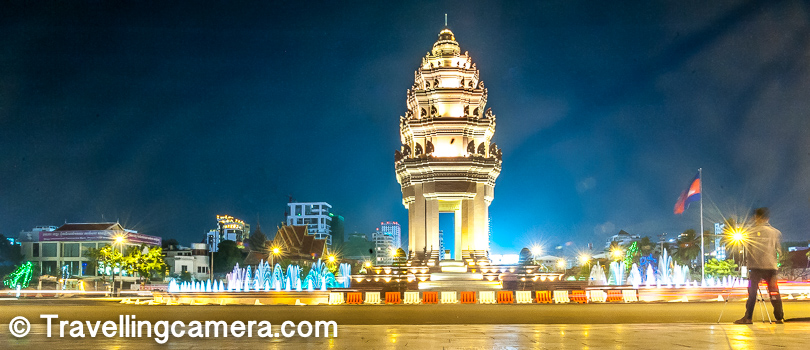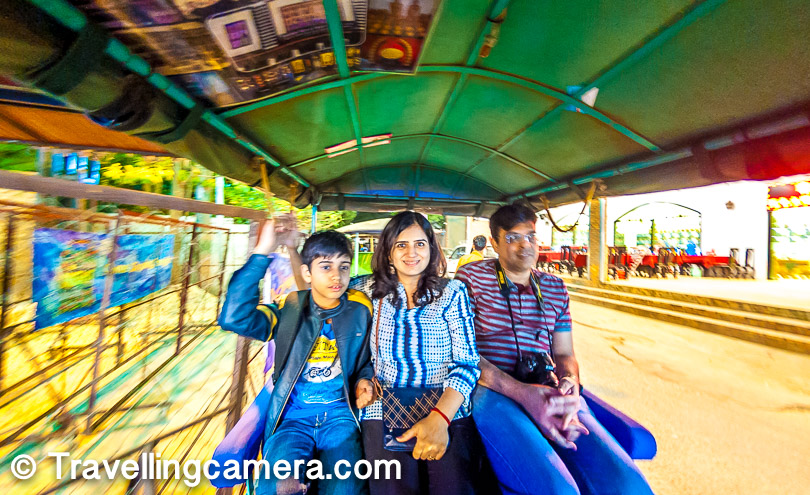I was about to write a post about Tips and Tricks for choosing right Zoom Lens, but then I realised that the very first thing to know about right lens for different genres of Photography. So in this post we will share about different kinds of Lenses available in the Market and which kind of photography is done by each of these kinds of lenses. And we are primarily focusing on DSLR lenses. Some of the generic stuff would apply to Mirrorless cameras as well.
When we talk about lenses, they help you shooting sharp photographs of flying birds to stunning portraits of your close ones. Most of the times, a good photograph is about using your equipments at right focal length and choosing right depth of field, if we only talk in context of lenses.
Let's first understand what Focal Length is in a Lens and what defines Depth of Field. When you buy a DSLR, in most of the cases, you get a kit lens which has a ring with numbers from 18 to 55mm. That's the focal length. Most of the cameras come with kit lens 18-55mm expect Full-frame cameras and some of the higher range DSLRs. When you use this lens at 18mm, you can have Aperture of 3.4 and 5.6 at 55mm. These numbers indicate minimum f value you can achieve and maximum aperture. This post talks a little more about clicking photographs with blurred background (low depth of field).
Let's talk about kinds of Lenses and ranges available for DSLRs, along with their specific use-cases :
A. Prime Lenses : These are lenses with fixed focal length, which means, no zoom at all. These come as 35mm, 50mm, 85mm and more. The next variation you get is in terms of aperture values. You must of heard of things like 50mm f1.8 Vs 50mm f1.4. Certainly cost vary a lot when you move from 1.8 to 1.4 prime lens within same brand and for same focal length. Because there are not much optical customisations in these lenses, overall quality is much better. The only caveat is that you need to move forward/backward to shoot right frame with these lenses. Some of these lenses are used for clicking still life, portraits and lot more.
Few notable things about Prime Lenses :
1. These lenses are fast.
2. These lenses make you work as you need to move around to frame your shots well.
3 Usually weight is less, but some of the pure glass lenses can be little heavy. Nikon 50mm 1.4 is comparatively heavier that Nikkor 50mm 1.8 but that also comes with significant change in quality.
4. f1.4 & f1.8 are your best friends in comparison to f2.8 when it comes to shooting in low light.
5. Be aware of the focal length you want in Prime Lens.
Some examples :
Nikon 50mm f/1.8 - Good lens for portraits
B. Zoom Lenses : Just opposite to Prime lenses, Zoom lenses offer the flexibility of changing the focal length as per distance of the subject from photographer. Like the kit lens which comes with DSLR cameras is 18-55mm which means that you can click wide shots as well as a little zoomed in shots at 55mm. Other zoom lenses are also available in different ranges - 18-200mm, 24-120mm etc. Nikon, Canon and other companies offer varied set of lenses in zoom category.
Without going deep into other details, I would want to say one thing that Zoom lenses give lot of flexibility and probably best companion for travel, but because of the huge range one needs to be very careful while choosing right lens. It's mostly about finding reasonable quality zoom lens in your identified budget.
Some examples :
Nikon 16-85mm f/3.5-5.6 - A good lens for landscapes and travel
Nikon 18-300mm f/3.5-6.3 - A versatile as it provides pretty good range.
C. Telephoto Lenses : These are lenses which specialise in clicking distant subjects These are usually heavy and expensive. Wildlife photography is a classic example of genre which demands telephoto lenses. Some of the examples are Nikkor 70-200mm 2.8, Canon 100-400 3.4mm etc.
Above photograph is clicked with Nikkor 70-200mm f/2.8. The bird was at a significant distance.
Some of the best Telephoto Lenses for Canon DSLR cameras (On the basis of research done by one of my closest friend who has Canon cameras) :
We will soon be publishing list of Best Telephoto Lenses for Nikon DSLR cameras.
Some more examples -
Nikon 70-300mm f/4.5-5.6 - Decent option for Action photography
D. Wide-Angle Lenses :
These are lenses which help you shoot wider frames. This definition sounds silly :). So essentially these lenses help in shooting views which can't be seen through human eye at single point of time. These lenses are usually used for clicking landscapes and interiors where space is less but still you want to click whole space in one go.
These are lenses which help you shoot wider frames. This definition sounds silly :). So essentially these lenses help in shooting views which can't be seen through human eye at single point of time. These lenses are usually used for clicking landscapes and interiors where space is less but still you want to click whole space in one go.
Above photograph is clicked with Nikkor 10mm f/2.8 and if you notice closely this one is clicked inside a Tuktuk in Cambodia. Clicking such wide shot at such small distance is only possible with something like 10-12mm. Later on this photograph is also corrected in Lightroom because wide & extra wide lenses produce photographs with distortions around the edges.
Examples of Wide-angle lenses :
Nikon 10-24mm f/35-4.5 - One of the coolest wide-angle lens
With this I would conclude this blogpost and now it's your turn to share your comments through the section below.








.jpg)
Comments